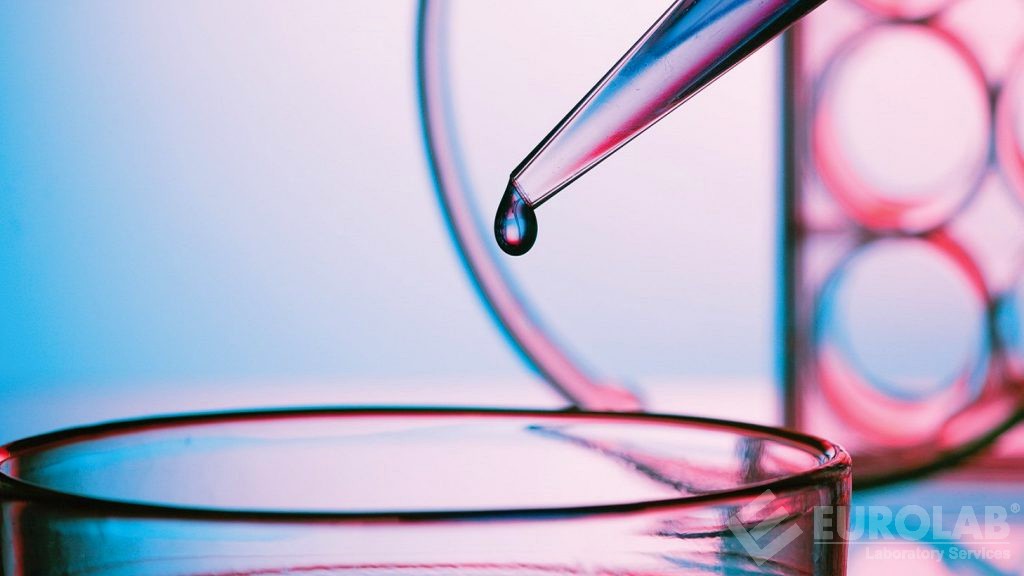


We help you evaluate the Sensitivity, Toxicity, Efficacy and Tolerance. EUROLAB uses in vivo alternatives on animal rights and legal requirements. We offer specific In-Vitro studies following approved and in-house methods to ensure safety and product marketability.

Why is in vitro testing important?
We use in vitro testing primarily for regulatory safety testing and chemical product evaluations. In cosmetics, we use it to predict the efficacy and toxicology of cosmetic products. We also perform in vitro tests to select and rank your chemicals during development of new chemicals and products and in toxicology research.
In vitro eye irritation test
EpiOcularTM (OCL-200-EIT)
This in vitro hazard assessment test can separate non-ocular irritants from those that are ocular irritants.
As part of the protocol, we apply the test substance to the non-keratinized epithelium prepared from normal human keratinocytes.
The ability to expose tissue topically is necessary to model the same progressive injury expected in vivo. It also allows both solid and liquid test materials to be applied directly to the tissue.
After the application, we determine the cell viability with the MTT test. We use the ELISA photometer for the final determination of cell viability.
A substance is classified as an irritant if the minimum 2 mean cell viability under test tissues is below 60% of the negative control.
EpiOcular ET-50
This in vitro test is based on the effective time a material (properly applied) causes a 50% reduction in tissue viability (ET-50).
Based on ET-50%, the test product is classified in 4 of 1 classes ranging from non-irritating, very mild, mild, moderate to severe / extreme. These correspond to the groups of Draize rabbit eye test scores (MMAS).
Certifications
Eye irritation tests are as follows:
Approved by ECVAM for substances and mixtures.
Good laboratory practice (GLP) certified.
In vitro eye corrosion test
We use the Bovine Corneal Opacity and Permeability test method (BCOP) as an alternative to the Draize rabbit eye test to determine:
Chemicals That Cause Serious Eye Damage
Chemicals Not Requiring Classification for Eye Irritation or Serious Eye Damage (OECD 437)
We conduct the test on corneas isolated from the eyes of cattle slaughtered for commercial purposes.
In vitro skin irritation test
EpiDermTM (EPI-200-SIT)
We use the Reconstructed Human Epidermis Test Method (OECD 439). We apply the test substance to the restructured human epidermis (RhE) under different conditions.
After the application, we determine the cell viability with the MTT test. We use the ELISA photometer for the final determination of cell viability.
A substance is classified as an irritant if the mean cell viability of a minimum of 3 under test tissues is below 50% of the negative control.
Certifications
Has an in vitro skin irritation test
It has been approved by ECVAM as a reference method.
Received regulatory approval for substances and mixtures.
It has good laboratory practice (GLP) certification.
In vitro skin corrosion testing
EpiDermTM (EPI-200-SCT)
We use the Reconstructed Human Epidermis Test Method (OECD 431). We expose the test substance topically to a reconstructed human epidermis (RhE) model and then perform a cell viability test.
By dehydrogenase conversion of MTT contained in the cell mitochondria, we measure cell viability to a blue formazan salt, which we quantitatively measure photometrically after extraction from tissues.
The skin corrosive potential of the test materials is classified according to the residual cell viability obtained after 3 minutes or 1 hour of exposure to the test chemical.
Certifications
In vitro skin corrosion testing has been validated with ECVAM as a reference method.
In vitro inhalation toxicity test
EpiAirwayTM
We expose the test substance topically to an organotypic human airway tissue model (EpiAirway) for 3 hours for testing. We then measure the tissue viability IC75 (the dose required to reduce EpiAirway culture viability to 75% of the device treated tissues).
By dehydrogenase conversion of MTT contained in the cell mitochondria, we measure cell viability to a blue formazan salt, which we quantitatively measure photometrically after extraction from tissues.
We estimate the inhalation irritation potential of the average viability of 2 tissues exposed to the test substance compared to the mean viability of the 2 negative controls (treated with sterile deionized water).
EUROLAB, with its highly specialized team and international accredited laboratories, In Vitro Efficacy Test It performs all test, analysis, measurement, evaluation and report generation services completely and reliably.
